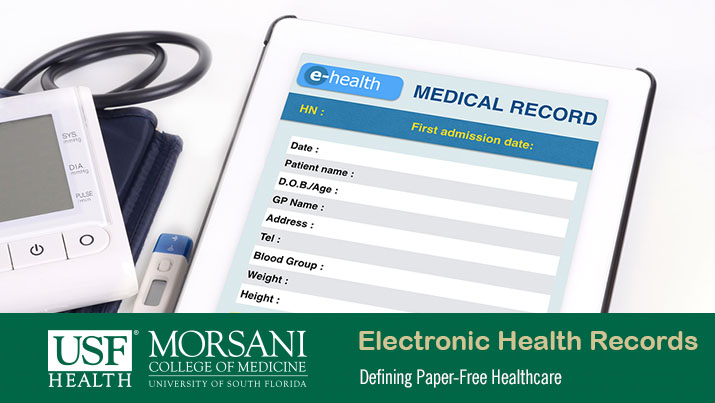Electronic health records (EHRs) are detailed accounts of health information, generated by a patient’s healthcare providers across the industry. An EHR typically contains information such as the patient’s demographics, contact information, vital signs, allergies, medical history, current and past medications, immunizations, radiology reports and laboratory data.
EHRs are designed to be shared across the spectrum of a patient’s providers to help deliver a more comprehensive health experience with the most accurate information possible. Today, a number of healthcare providers have found that with the implementation of electronic health records also comes decreased medical costs and improved patient care.
Electronic Health Records: The Past, Present and Future
The evolution of EHRs started back in the late 1960s when multiple efforts in support of EHRs were appearing throughout the U.S. It all began with new technology that changed the way we record and share data, and healthcare providers wasted no time in seizing this opportunity to improve the delivery of healthcare.
There were three main problems that providers were hoping to resolve with the implementation of EHRs, according to Dr. Clem McDonald from the Regenstrief Institute, who helped create the Regenstrief Medical Record System in 1972, according to ahima.org.
Those three problems are as follows: “(1) to eliminate the logistical problems of the paper records by making clinical data immediately available to authorized users wherever they are – no more unavailable or undecipherable clinical records; (2) to reduce the work of clinical bookkeeping required to manage patients – no more missed diagnoses when laboratory evidence shouts its existence, no more forgetting about required preventive care; (3) to make the informational ‘gold’ in the medical record accessible to clinical, epidemiological, outcomes and management research.”
Fast forward to now, and the goal for EHRs remains principally the same.
Related: EHR vs. EMR
Where We Are Now With Electronic Health Records
From 2001 to 2011, the percentage of physicians using EHRs grew from 18% to 57% and the percentage continued to increase in the years following. By the year 2015, 63% of healthcare providers had adopted EHRs. The percentage for 2016 went down slightly to 59% due to a larger sampling size. Looking at these percentages, it is clear that EHRs have come a long way over the past few years and should only continue to grow as time goes on.
Here are some EHR advancements to look for:
- Cloud-based EHRs – A number of industries, including healthcare, are making the move to software applications in the cloud. Healthcare providers are finding that it is much more cost effective to implement and update EHRs in the cloud because it removes the constant need for new hardware.
- Improved Patient Portals – Patients truly enjoy the convenience that comes with a patient portal. The patients can use them to do various things, including following up with their provider, paying medical bills or being notified of other kinds of critical information.
- Growth of Telehealth – The market for telemedicine is expected to exceed $30 billion by the end of the decade, according to healthcareitnews.com. With telehealth technology, doctors can do consults with patients prior to surgery without having them come into an office or hospital. This is especially convenient for members of the senior population who have a hard time leaving their homes to be evaluated by a doctor.
- Mobile Friendly EHRs – Doctors and nurses cannot always be tied to a computer screen. They need to be able to access EHRs on mobile devices, such as smartphones or tablets. In order to fill this need, many EHRs will have to update their interfaces to be mobile friendly.
The Future of Electronic Health Records
Most healthcare providers have moved past the implementation phase of EHRs and are focusing on the continuous optimization of them. From this point on, all workflows related to a patient’s care are expected to be handled by EHRs.
These workflows include handling external documents, messages and general communication with patients. Patients should only need to log into one patient portal to access all of their physicians and communicate with them.
EHRs will also need to provide open access to internal data. Clinical quality measures, demand that will affect staffing levels and disease trends are all good examples of reports that healthcare providers will want to have access to. Essentially, the role of EHRs as repositories for patient data will slowly go away.
The future of EHRs is all about expanding the interconnection between patients and their healthcare providers. Patients’ health data should be connected across all of the places where care is sought. Readily available information, as well as direct access to communication with any healthcare provider, should always be just a click or a swipe away.




